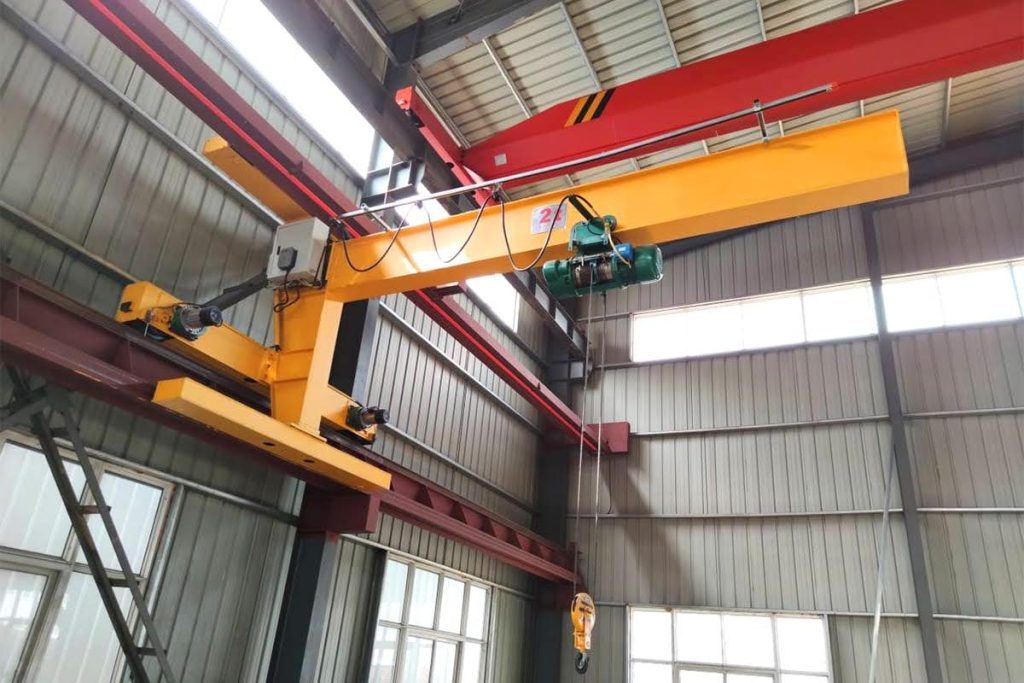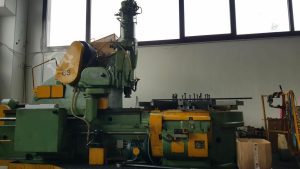Explore Wall Travelling Jib Cranes: Key Benefits for Your Operations!
A wall travelling jib cranes is suitable for the use of unilateral working areasin the workshop. Rails are all fixed on the workshop column or the independently mounted column. Usually installed in workshops with upper and lower double-layer lifting equipment, used for lifting and transporting small-tonnage workpieces on the lower layer.
Key Components:
1. Lifting Traction Mechanism:
The lifting traction mechanism employs an AC variable frequency speed control system with a lifting speed ranging from 0.8 to 8 m/min. It consists of a wire rope winding system, a drum device, and a drive device, with a pulley ratio of 2.
The lifting traction rope system mainly includes fixed pulley sets, hook pulleys, balance pulleys, direction-changing pulleys, and double drums. The drum features a double-layer return structure.
To extend the service life of the wire rope and prevent rope tangling, it is crucial to select appropriate pulley diameters and maintain reasonable angle deviations when designing the wire rope traction system.
2. Trolley Running Traction Mechanism:
The trolley running speed is 19.4 m/min and is composed of a wire rope traction system, a drum device, and a drive device.
The trolley running traction rope system includes 3 direction-changing pulleys and a single drum.
The trolley running traction drive device includes a 3.7 kW YZR drive motor, a brake, a reducer, and a drum. The traction wire rope uses a flexible multi-strand wire rope with a fiber core for improved contact and durability.
3. Bridge Running Mechanism:
The bridge running mechanism employs dual-wheel dual-drive, with a running speed of 21.6 m/min. It uses two 15 kW three-in-one vertical reducers, which directly drive the wheels through an open gear pair for speed reduction.
The three-in-one transmission components are characterized by easy installation, lightweight design, and high torque transmission. This compact arrangement simplifies the structure and saves space.
Working Principle:
Wall travelling jib cranes are different from semi gantry cranes used outdoors and are suitable for the use of unilateral work areas in the workshop.Its running rails are all fixed on the workshop column or the independently mounted column, and there is no obstacle on the working surface. BXQ boom traveling cranes are usually installed in workshops with upper and lower double-layer lifting equipment, which are used for lifting and transporting small-tonnage workpieces on the lower layer, and are used crosswise with the upper-layer large-tonnage cranes without interfering with each other. The product is easy to install and maintain, flexible to operate, safe and reliable.
Wall travelling jib cranes provide long lateral movement of materials without taking up floor space or interfering with large overhead cranes. Wall-travelingjibs increase overall plant productivity by quickly handling smaller lifts. Dafang Wall Traveling Jib Cranes are cost-effective, custom engineered solutions that are specifically designed to meet your production needs and building specifications.
Advantages:
Easy maintenance
Easy installation
Flexibility of operation
Safe and reliable
Applications:
Wall Travelling Jib Cranes are essential tools for enhancing productivity and efficiency in a range of industries. Their ability to travel along a wall-mounted track makes them highly versatile and adaptable for numerous applications. Here’s a detailed look at their applications across various sectors:
1.Machinery Industry:
- Assembly and Maintenance: These cranes are crucial for assembling and maintaining heavy machinery. Their ability to move along a wall allows for precise positioning of components and efficient handling of large parts.
- Manufacturing: They are used for lifting and positioning machinery components during the manufacturing process, optimizing workflow and minimizing downtime.
2. Metallurgy:
- Material Handling: In metallurgical plants, Wall Travelling Jib Cranes handle raw materials, such as metal sheets and ingots, with ease. They facilitate the movement of these materials to various processing stations.
- Production Support: They are used to support production lines by moving semi-finished products and tools within the plant.
3. Automobile Industry:
- Assembly Lines: These cranes assist in assembling vehicles by moving parts and assemblies along the production line. They contribute to the smooth and efficient operation of automotive assembly lines.
- Parts Handling: They are employed for handling spare parts and components, ensuring they are readily accessible for assembly and maintenance.
4. Shipbuilding:
- Component Movement: Wall Travelling Jib Cranes are used in shipyards to move heavy ship components, such as hull sections and machinery, into position for assembly.
- Assembly Support: They support the assembly of ships by providing precise control over the placement of large and heavy parts.
5. Glass Industry:
- Handling Glass Sheets: These cranes handle delicate and heavy glass sheets with precision, minimizing the risk of breakage during transportation and placement.
- Production Line Support: They assist in moving glass products through different stages of production, from cutting to packaging.
In summary, wall travelling jib cranes offer flexibility and efficiency across these diverse applications, making them a valuable asset in many industrial settings. Their ability to move along a wall-mounted track allows for optimized space utilization and enhanced operational efficiency.








